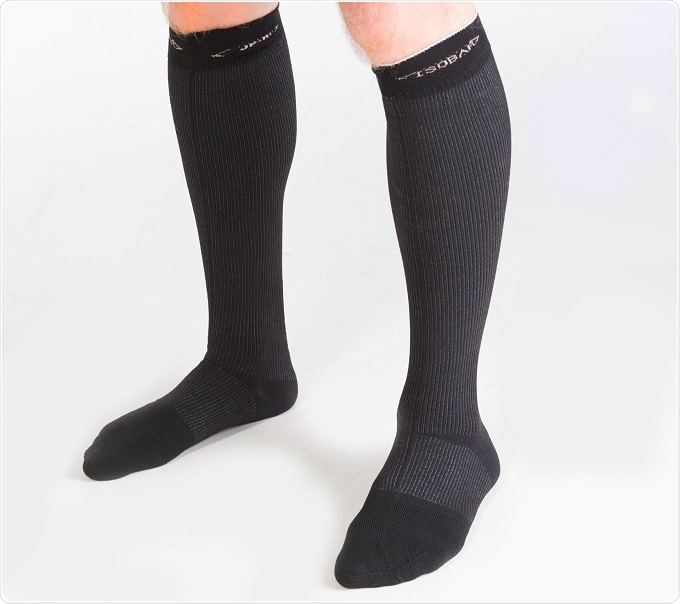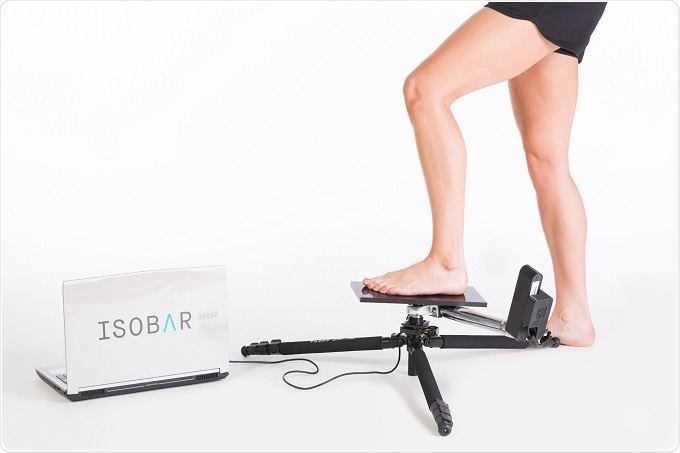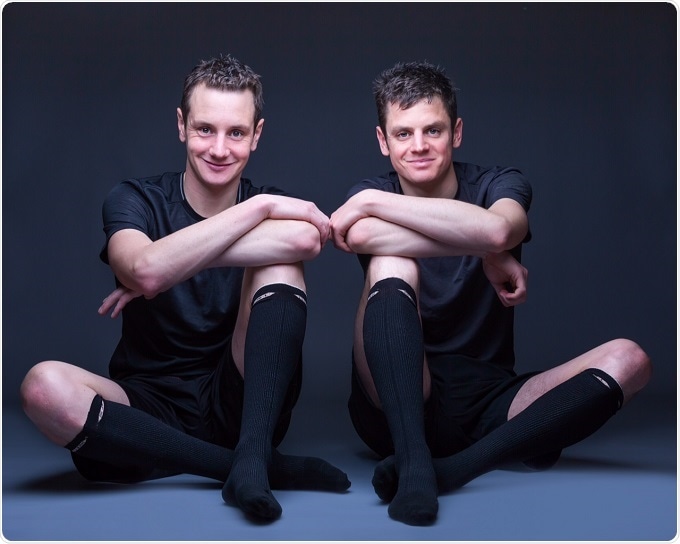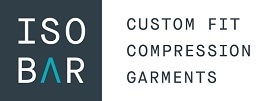The vision started in 2001 with the vascular study unit and the textiles department at Manchester University. They were looking to see if they could develop a better way of producing graduated compression for venous ulcer disease.
Professor Charles McCollum, who heads up the vascular studies unit, is a research vascular surgeon, and he developed four-layer bandaging technique, which is the gold standard treatment for healing up leg ulcers by compression.
It has taken several years to get the technology correct and allow us to produce a bespoke compression garment from a 3D scan. The process requires the capture of a 3D scan, software to translate the 3D scan to an algorithm, and tension feeding in to a specially adapted flat bed knitting machine. In addition, the material had to be developed with the necessary properties to produce the required performance to deliver accurate pressure profiles and resilience.
It has been a long process and it is only in the last year that we have been in a position to start promoting the solution commercially.

Why don’t off-the-shelf compression socks work for 54% of people?
It's more complicated than that. One study showed that 54% of people, at some point during the study, would have a reverse gradient and for 98% of patients, the stockings didn't fit; they didn't produce anything like the pressure that was required.
We had other work done independently looking at off-the-shelf stockings and most of those don't deliver anything like the pressures they say. Unfortunately, some of them are tighter higher up the leg, depending on the anatomy of your leg, which causes constriction and therefore the reverse of the desired effect. That's the problem, which is basically down to the anatomy of each individual limb.
Sports players using them mostly opted for a large or extra-large size, but some of them weighed over 20 stone, whereas others weighed 15 stone and yet the stockings are supposed to produce graduated compression for all, which they clearly can't do.
Washing is also an issue with most of these products, the pressure profile goes once you wash them a handful of times . We've tested ours now to 100 washes and the pressure profiles are still maintained, so they're durable. They are priced competitively compared with other compression garments on the market, but they do what it says on the box and they last a lot longer.
Can ill-fitting stockings further increase the risk of DVT?
There's no trial to support that, but clearly one of the mainstays of compression is to increase the venous return up the leg. Venous pooling in the leg is probably one of the main causes of DVT in the first place. You may try to increase the venous return, but if you've got a stocking that does the opposite and actually reduces your venous flow or even stops it, then clearly that's not going to help.
I can't say it definitely would cause DVT, but if you're going to go to the trouble of getting compression stockings, you ought to opt for a product that does what it says on the box, which is actually produce a graduated pressure profile that increases venous return guaranteed for the individual patient.
We've done a study on healthy volunteers in Manchester, using doppler ultrasound to show how quickly the blood's flowing back up the leg.
We've shown that with the Isobar technology, with no sock, it is 35 seconds venous return up the leg. With one of our 20 mm at-the-ankle socks graduated up, there is a 31% increase in that flow, and at 25 mm at-the-ankle graduated up, there is a 59% increased flow.

How does Isobar’s 3D scanning technology work?
The 3D scanner is made up of an infrared camera and a digital camera. The patient stands with their foot being scanned on a plate. The camera then creates a 3D box around the limb.
We can also scan upper arm for lymphedema where the scanner is lifted up to the height of patients shoulder. The scanner arm rotates around the limb and it only needs to do about 270˚ for it to create a full 3D profile. It records approximately 260,000 data points from each leg or each arm.
That 3D profile is then immediately electronically transferred via Wi-Fi connection to our factory in Manchester, a textiles hub of the UK.
That 3D profile is then superimposed on an algorithm on a specially adapted knitting machine. That knitting machine has a specially adapted yarn feed or a material feed that pulls through each thread of material at a certain tension, depending on what pressure you want to apply at each point on the leg. We can dial in the exact graduated pressure profiles, depending on the patient's needs. Other compression manufacturers quote pressure ranges which are within the bands of Class 1, Class 2 and Class 3; we can choose an exact pressure rather than a range.
Have Isobar’s compression socks been clinically tested?
We've done the healthy volunteers for venous return and we've got some comfort and compliance data from Manchester, which hasn't been published yet but the data shows that in patients with venous ulcer disease problems, we get significantly greater compliance.
This is very important because most studies show that 50% of patients do not comply with wearing their compression stockings because they find them uncomfortable, too hot and so forth. Our data shows that Isobar’s stockings are very well tolerated.
When you consider that up to 40% of venous ulcers recur annually, if we could provide compression that was complied with, we might be able to reduce that figure. However, we need studies to do that.
We've written one study, for which we're waiting on ethics approval. It's a pilot study comparing Isobar with standard two-layer compression bandaging in treating active ulcers, to see if we can at least get equivalence. The study is designed to show that it saves on bandage costs but more importantly nurse time because that's one of the most expensive parts of the whole equation.
If we can show that we save substantial amounts of nurse time, that will power us up to hopefully do a much bigger study showing a bit more about what the potential is for the Isobar stockings.
We're going to be doing another pilot study on recurrence. We will put people into stockings after ulcers have healed and then follow them up to get the compliance data. That would hopefully also feed into a bigger study to look at reducing recurrence rates.
The financial impact on the NHS alone is enormous. If we could reduce ulcer healing times or recurrence rates, or even if you had no impact on that but just significantly reduced the amount of nurse time, it would be a huge contribution whichever way you look at it.
However, the studies take a long time to set up and we've only really been in a position to actually go into that marketplace with clinical trial work in the last six to eight months. It's taken that long to get some funding and to get a study written up that is suitable enough for us to seek ethics approval for. These things move very slowly, unfortunately, but that's the way it works.

What feedback have you received from users such as Olympic medalists Alastair and Jonathan Brownlee?
I can quote the Brownlee Brothers directly:
We train and race all over the world, which involves a massive amount of flying and coming from a medical family, we know the chance of getting a DVT is not worth the risk and could end our careers. Isobar compression socks fit perfectly, and they're comfortable enough to wear all day while traveling."
Can you please outline the research contract Isobar have recently received from the Small Business Research Initiative (SBRI) to study whether Isobar Compression’s solution could play a role in treating venous leg ulcers?
The SBRI application was about capacity within general practice: workload and demand management. We wrote a protocol on the basis that 40% of the community nurse time (mostly practice nurses employed by GPs) is spent dealing with leg ulcers. If we could substantially reduce that time, we could free up a lot of expert nurse time, which would play into general practice hugely.
A lot of the work with leg ulcers could be carried out by less skilled staff because they wouldn’t have to wrap the bandage at certain pressures.
We wrote that bid, which was successful and we're now running this pilot study to look at comparing two-layer bandaging with the Isobar in venous ulcers. We just need to show equivalence, but we can't power up the study enough. You need enormous numbers of patients to really show the effects on venous ulcer healing, because the median time for healing is 90 days.
However, we should be able to at least work the financial modeling through to show that there's a potentially significant benefit. That then feeds into the second phase of this because if we can prove what we've said in our original submission, we would then be eligible for a much bigger grant that would allow us to pursue the commercialization of Isobar.
Do you think Isobar’s compression socks could also be used for lymphedema patients going forward?
Absolutely, yes. A very small number of patients have tried them out in a clinic in London and the response has been very positive. I have now talked to two of the experts on lymphoedema who are leading this in London and I'm hopefully going to be meeting one of them in the next few weeks.
He wants to use our stockings for lymphoedema in particular. I'm anxious that we get some audit data , to show something a bit more objective than just the patients feeling they were comfortable, although that's a huge factor; if the patients comply, then they will do better. Some of the lymphedema arm sleeves are very expensive and really uncomfortable, so we think we've got a potential game changer with these garments.
We're also dialing up and dialing down the pressure, depending on how the patient is responding to the compression. The fact that we can change the pressure profile to suit, means that the specialists can now, for once, actually say exactly what pressures they want at each point. Nobody's ever been able to do that before and trying to produce that sort of thing with bandaging is very difficult. Therefore, we're definitely going to be moving into the lymphoedema market and we'll be looking to get some objective evidence.
There's a huge problem with lymphoedema, particularly out in parts of the Middle East and Far East, for all sorts of reasons. There’s a high genetic incidence of lymphedema and we've been talking to people in those areas of the world who are also extremely keen for us to get out there and get clinics running to scan.
The problem we've got is that we're a small company. It's a matter of scaling ourselves up because we don't want to promise and then not deliver. Our problem now, although it is a nice problem to have, is scaling up to cope with the demand that we're generating. It is a case of watch this space really and see how we go.
We want clinics all around the world. Since you can send data by Wi-Fi, clinics anywhere in the world with a scanner can have our factory produce the stocking and post it out to them.
Nurses also spend an enormous amount of time with tape measures measuring up limbs so they can order an off-the-shelf or made to measure stocking. Compliance with these is not good. The nurses we have talked to are keen to use the technology- a 10 second scan and a stocking that fits, would make their lives easier, but more importantly gain better compliance which in turn delivers health benefits to the patients.
In addition to scaling up, what are Isobar’s plans for the future?
We've got to plan the scale-up correctly. We're getting a lot of interest and we need to increase our capacity to cope with the level of demand.
One of our main thrusts is in compression in sport. We've got research going on at St. Mary's Twickenham, to try to show that the accurate compression with our stockings does improve recovery times. This is for elite athletes, but it'll spill off into the rest of the sports market, because compression is a huge market in sport and most of the products don’t really fit properly. It's pot luck if you actually get one off the shelf that fits you and does what it says on the packet, whereas ours will.
We're doing research that we're hoping to publish before Christmas, which would be huge because then we'll be moving into the sports compression market with elite athletes. We've already had interest from two premiership rugby clubs that want to use our compression recovery for their entire squads next season and we've got winter Olympic athletes who are using them. We also supplied over a 100 GB Olympic athletes in Rio.
We've also got several top-flight golfers, amongst the top 50 in the world, who are using our compression stockings now for travel. Some of them are even wearing them whilst walking around the course when they're playing and so on.
We're moving into corporate travel because a lot of people are buying flight socks or not wearing anything at all. Without scare-mongering, we're saying there is a risk; it's a small risk, but it is definitely a risk and for a fraction of the cost of your flight, you can get something that fits you and will probably last several years because you can wash them 100 times. It'll actually do what it says, which is to get the venous return and reduce that risk of DVT even further.
 Where can readers find more information?
Where can readers find more information?
Isobar Compression
About Jim Hampton

- Qualified Charing Cross 1980
- Several years working in neonatal intensive care
- 1 year at Adelaide children’s Hospital including 4 month secondment to Alice Springs and time on the flying doctor service in the Western Desert
- GP in Bath 1988-2016
- Doctor to premiership rugby club - BATH 2003-2015
- 25 years vasectomy surgeon for Bath and North East Somerset
- 2016- medical advisor to ATM